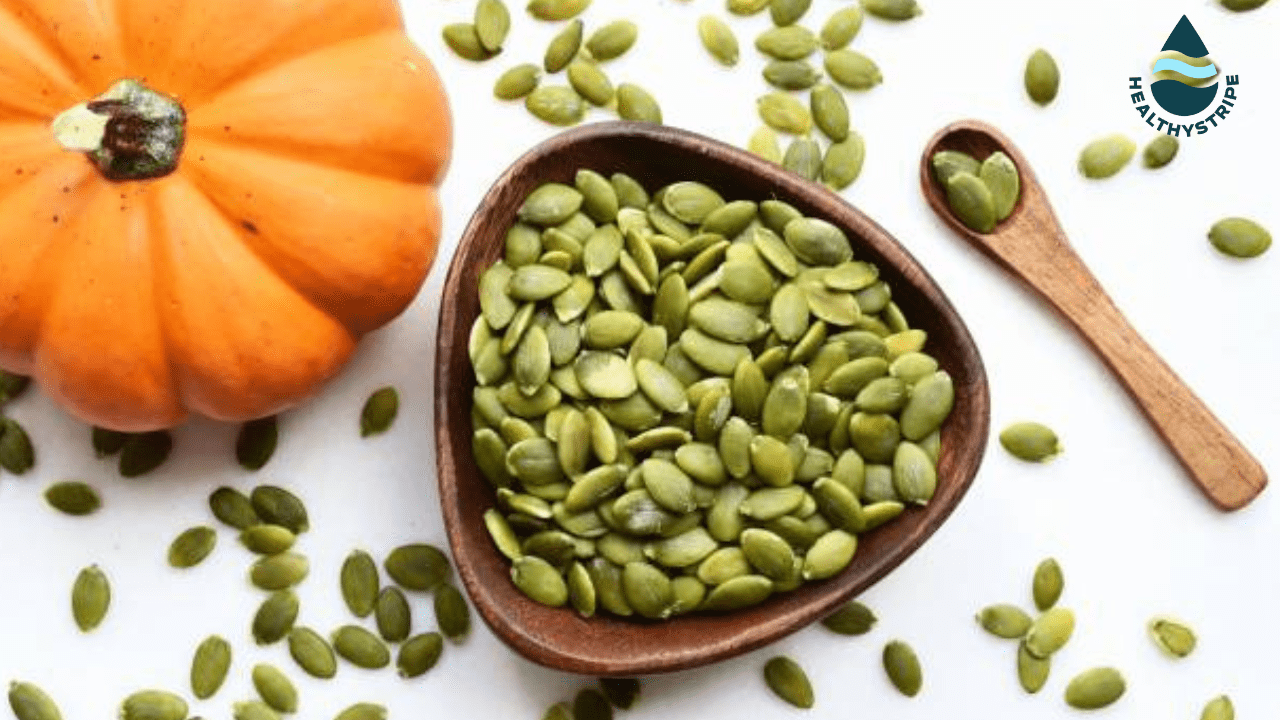Monk Fast (36-Hour Fast) : Benefits, Side Effects, and Steps to follow

The 36-hour fast or Monk Fast is exactly what its name suggests. It’s about one and half days of eating nothing and drinking only no-calorie drinks to maintain proper hydration.
This fast is different from other fasts because of its intensity. Firstly, it’s for a much longer period of time, and unlike some fasts, you aren’t allowed to munch on fruits.
It’s time we understand this fast in detail and see if it has any benefits we can take advantage of. Keep reading!
[lwptoc title=”Table of Contents”]
What Is the Monk Fast?
The Monk Fast is a type of fasting where you only drink water for 36 hours once a week. It is similar to fasting every other day. Dieters who want an easy way to lose weight and improve their health like it because it doesn’t have a lot of rules or restrictions.
A monk fast, better known as the 36-hour fast is what can help you practice discipline and mindfulness like that of a monk.
What can you eat or drink during this type of intermittent fasting? Well, you should not be consuming any solid foods and calorie-dense fluids. You can have drinks like sugarless black coffee, black tea, or green tea (without any syrup or honey).
Water is your staple during the monk fast.
Does it work for Weight Loss?
The Monk diet, as an extended method of intermittent fasting, is certainly effective for weight loss.
It helps in weight loss through the dual action of
- Calorie control- There is a reduction in the total amount of calories consumed which leads to weight loss
- Lipolysis- During extended fasts, the body starts lipolysis- burning fats as a fuel source. Due to the long durations of ketosis in a 36-hour diet or Monk diet, there can be significant weight loss.
3-day fasting can make you lose up to 1-2% of your body weight.
Adding resistance training to your fasting regimen has been proven to be beneficial for reducing body fat while maintaining lean muscle mass.
Monk Fast (36-Hour Fast) Benefits
Why are you willing to try the monk fast? Here’re 5 reasons!
1) For weight loss
When you engage in 36-hour fasts, you basically are not consuming any calories for a long time. The daily activities are enough to ensure you burn more calories than you consume, even if you don’t exercise during the fast. And that’s the fundamental of weight loss.
According to a study, over 12–24 weeks of whole-day fasting reduced the body weight of participants by up to 9% and led to a significant decrease in body fat which saves you from heart disease.
Being a type of intermittent fasting, the monk fasting brings benefits like increased calorie burning. Now because you don’t load up on carbs – the usual fuel for the body, it starts burning your fat for fuel.
Also, since you load up on water or caffeinated black tea without sugar, you help your body flush out the toxins and fat it helps break down, as well. Thus, helping with losing excessive weight.
2) For more mindfulness
You must know that monks, spiritual leaders, and almost all religions abide by the power of fasting. These are also the people who tend to be very mindful in the eyes of the world.
Is there a relation?
Being mindful has tons of benefits. You become more productive. It reduces your stress and anxiety and helps you be more content with life.
By keeping a fast of around 36 hours, you become aware of your hunger but need to practice not reacting to it. This improves your discipline.
Fasting also forces you to examine your thoughts, beliefs, and expectations more closely. And that allows you to change them if they are negative.
You can also use monk fasting as a more advanced kind of self-cognitive behavioral therapy anytime you’re facing a new difficulty. It’s almost like a workout but for your mind.
3) To break unhealthy eating habits.
The reason why we continue with unhealthy eating habits is that after a certain point in life, we eat mindlessly.
For instance, we love to snack on something if we watch a movie. Or when we get stressed. Sometimes even when we are just simply bored.
But with increased mindfulness with the monk fast, you get to pause on such mindless eating. And when you break the fast and get back to your eating habits, you become conscious and take the correct steps. All because you had the time and opportunity to lead your life without the unhealthy eating habits, even if it’s for only one and half a day.
4) For increased longevity
A monk fast can slow down aging for you. The activation of autophagy is responsible for fasting’s anti-aging effects. It’s a natural mechanism in which the body clears out damaged cells to produce healthy new ones.
This process also defends against a variety of chronic diseases. These include heart disease, diabetes, cancer, and neurodegenerative illnesses like Parkinson’s disease.
5) For better heart health
Fasting increases the creation of ketones. These are energy molecules that are the heart’s preferred fuel source. They give the heart more ATP (cellular energy) than glucose, which is the default fuel when you eat a carb-heavy diet.
According to studies, fasting can lower blood pressure and raise levels of BDNF-1 (human growth hormone), as well. Both help your heart function better.
How to Follow it
Start with practicing the regular intermittent fast – the 16/8 fast. During this, you can have a feeding window of 8 hours after every 16 hours of fasting. Try it for at least 3 to 4 days to see how your body reacts.
Once you get comfortable with the 16/8 fast, move the fasting window to up to 20 hours.
Take a break of at least a couple of days from fasting before you move it up any further to, say, a 24-hour fast.
By now, you will know your body’s limitations when it comes to fasting for long periods.
With that awareness and knowing how to do intermittent fasting, you can give the 36 hours fast a try.
But if you are uncomfortable trying a 36-hour fast just yet, it would be better to try a 7-day keto diet. It will help your body get used to not eating carbohydrates. Once you stop craving carbs, the fast will become easier.
And when you are ready, try starting the fast on a Monday evening after dinner and finishing it up on Wednesday morning. The beginning of the week is great because it’s when you have high motivation.
Also, remember not to break your fast with something heavy like a dessert, meat, or pulses. Since your body won’t get anything to eat for 36 long hours, it will react badly if it gets something heavy suddenly. A light breakfast is a way to go!
Finally, make sure to have a why.
In a world where it is tough to quit just unhealthy food, it seems utterly impossible to quit eating anything at all for 36 hours straight.
You will need the motivation to make that work, and that comes from your why. You should know exactly why – for what benefits – are you trying such a feat.
Note: Try a 36-hour fast only once a week if you are thinking of doing it regularly. Practicing it more can once easily get harsh for your body.
Side Effects Of A Monk Fast (36-Hour Fast)
Apart from a lot of benefits, there are also some side-effects of the 36-hour fast, let’s check them out:
1) Dehydration symptoms like headaches and irritability.
A large portion of the fluid requirement of your body is accomplished from water-rich foods in your diet. Otherwise, your only source is water, and unfortunately, many of us don’t have a habit of taking it enough. Even if you have enough, there can be a loss of electrolytes which is usually replaced by electrolyte foods.
Because of the absence of such foods, fasting can lead to dehydration and cause irritability, headaches, and fatigue.
To avoid these conditions, you can try having electrolyte drinks. Don’t worry, drinking electrolytes won’t break your fast.
2) Less energy
The body’s primary energy source is the carbohydrate-rich foods we consume. But without that, it has to take extra steps and turn into fat.
Also, the glucose from carbs provides instant energy – which is not possible when fasting.
Your only option for instant energy is caffeinated black tea or coffee, but excess of that can have disadvantages too.
Therefore, you must be ready to get tired if you try monk fasting. Make sure to not keep any significant tasks, decisions, and meetings for this period.
36 Hour Fast After : What to eat to break your fast ?
When breaking your prolonged fast you need to calmly introduce food into your system. You can always start with ready-to-eat breakfast foods like green tea. Just stay clear of heavy foods like nuts, meat, and dairy.
Move on with the following, and after your stomach gets used to the food (in 12 to 24 hours), you can slowly introduce your regular diet.
1) Green cooked vegetables
No matter how bad they may taste, after a 36-hour fast, even Brussels and Broccoli seem delicious. After all, you are overly hungry.
Green vegetables are full of iron, vitamins like A, C, E, K, and B2, plus, potassium, calcium, manganese, and magnesium like electrolytes.
All these nutrients are crucial for your body if they have been deprived of them for 36 hours.
You need cooked green vegetables instead of raw ones because you want to make this meal light on your belly.
Also, make sure you use one of the lighter oils for cooking. You can use coconut, olive, or avocado oil.
Better yet, you can use grass-fed butter or ghee and take advantage of the fatty acids in them as your body needs them for better digestion and absorption after a prolonged fast.
2) Bone broth
The best thing about bone broth is that it’s liquid and highly nourishing. When you fast, the body loses a huge chunk of water and electrolytes. As explained before, you may also feel dehydrated due to this.
The hydrating nature of bone broth, plus the fact that it’s rich in electrolytes, makes it great for starters.
You can make bone broth by boiling animal bones and other connective tissues. Bone broth made of chicken and fish is especially good when breaking a 36-hour fast because they are highly digestible.
Additionally, bone broth has fatty acids that increase the absorption of nutrients. Thus helping your body get rejuvenated at full speed.
3) Avocados
Monk fasting is like water fasting – an intense exercise. So, it’s easy to overeat when you break this fast as your hunger hormones are on a rise. But, eating too much – too soon can create chaos in your stomach, causing indigestion.
What you need is food that not only is light on the stomach but also reduces your appetite. Avocado is one such fruit.
Avocados are electrolyte-rich foods – full of nutrients and have fatty acids that promote absorption of these nutrients.
With more water-soluble fiber, fats, and antioxidants, you can replenish your body’s nutrition faster without trouble.
Does Monk Fruit Break a Fast?
Monk fruit is like stevia in that it is a natural, calorie-free sweetener that has different health benefits. It won’t stop your fast. Even though it helps most people, it might not be the best option for everyone. It could be a great addition to your intermittent fasting.
Alternative Fasting Methods
While the monk fast is a great fasting method, it is far from the only one. There are several other fasting methods that you can try
- 12-12 fast- This involves eating within a 12-hour window and fasting for the other 12. This is a good starting point for beginners as 8 hours are spent sleeping.
- 16-8 fast– A slightly more difficult fast which involves eating within an 8-hour window and fasting for 16 hours.
- 24-hour fast– No food for an entire day,
- 48-hour fast- Two complete days without eating. This should only be attempted under proper guidance and after plenty of experience.
- 72-hour fast– Three days of fasting will test the limits of even the most resolute people.
Bottom Line
A monk fast is a 36-hour fast and can be a great challenge for you to conquer. It is not suitable for pregnant women, people with any type of eating disorder, or individuals who have highly active jobs.
When you try it, make sure to drink plenty of water and do less stressful activities like reading or yoga.
If you can, get a friend or family member to try the monk fast with you. This can make it highly motivating.
Why not share this article with a friend right now? Let them know about the remarkable benefits of this fast and how they can get started.
How much weight can I lose on a 36-hour fast?
Are 36 hours fast long enough for autophagy?
Humans have shown this state when insulin and glucose levels fall significantly i.e. around 24 – 48 hours of fasting.
Is the monk fast healthy?
This is an excellent revitalizing method that is beneficial for heart and gut health.
What happens to your body after 24 hours of fasting?
Human biology is a mesmerizing topic. After the first 8 hours, the body will start consuming stored fat as the driving fuel to generate energy.
How often should I do 36-hour fasting?
Recent research has found that 36 hour fasts once a week, preferably Monday to Wednesday is the best to extract the optimum benefit of this technique
Can I drink coffee while fasting?
Black coffee or tea can be consumed during the fasting period as it contains negligible amounts of calories.
Will you lose weight if you fast for 3 days?
3-day fasting can make you lose up to 1-2% of your body weight. However, it is always better to consult with your physician in case you have any gastric issues.
Does sleeping count as fasting?
The answer is yes, when you are starting out, you can include sleeping time within your fasting period since there is no food intake during that time.
How many hours does autophagy take?
The process is initiated within 24-48 hours of fasting.
What are the 5 stages of fasting?
When you are fasting, certain metabolic changes occur in a sequential manner which can be categorized into 5 stages.
- In the first stage, ketosis occurs
- The second stage is autophagy
- In the third stage, growth hormone is released
- The fourth stage involves reducing insulin levels
- The fifth stage is the rejuvenation of the immune system
Does fasting cure depression?
Research claims that fasting has reduced symptoms of depression and anxiety in 80% of patients suffering from chronic pain.









